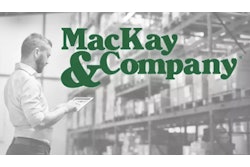In the equipment and parts business, success has always been measured by relationships, responsiveness and reliability. But what if the most loyal customers are quietly walking away, not because they stopped trusting you, but because you made it too hard to buy?
This piece explores the hidden revenue losses caused by outdated parts ordering processes. It reveals how friction, manual forms, phone-based ordering, PDFs, drives customers toward more convenient options. And it makes the case for why business-to-business (B2B) e-commerce is no longer optional.
If you’re not the easiest to buy from, you’re likely not being bought from. But there's a clear way forward, and it doesn’t start with more marketing or deeper discounts. It starts with removing friction.
The problem
Customers don’t tell you when they’ve decided to buy elsewhere. They don’t announce it. They don’t ask for permission. They just … leave.
We see it every day. A distributor assumes the customer is satisfied because the phone still rings and emails still arrive. But when it’s 7:00 p.m. on a Tuesday and a technician needs a replacement part, they don’t wait for your office to open. They Google it.
[RELATED: How digital self-service will help you navigate uncertainty]
And if your parts catalog isn’t indexed, interactive and shoppable, they bounce.
Let’s ask the hard questions:
- How many steps does it take to identify and order a part from you?
- How many of those steps require human involvement?
- When a customer can’t find what they need, what happens next?
You don’t see the lost sale on your P&L. You just don’t see the sale at all.
What the data tells us
This isn’t a theory — it’s an industry reality.
- According to McKinsey, 71% of B2B companies now offer e-commerce, and for many, it makes up 34% of their revenue.
- According to EMarketer, business-to-business (B2B) e-commerce sales increased 10.5% YoY in 2024, reaching $2.297 trillion. This growth underscores the accelerating shift towards digital channels in B2B transactions.
- Forrester expects U.S. B2B e-commerce to reach $3 trillion by 2027.
What this means: Friction-free buying is the new competitive advantage. And distributors who wait to digitize are playing defense in a game that’s already moved online.
Even loyal customers will take the easier path. They aren’t abandoning you. They’re choosing convenience.
The opportunity
The good news? You don’t have to guess what to do next. E-commerce isn’t a side project or a new channel — it’s the core infrastructure for doing business in a digital-first world.
Here’s what changes when you get it right:
- Customers can self-serve the moment they need something.
- Your support team stops answering the same part number questions over and over.
- Buyers come back, not just because of your products, but because buying from you is effortless.
You don't need to “go digital” because it’s trendy. You need to go digital because it’s profitable and because your customers already expect it.
What to do next
If any part of this sounds familiar, you’re not alone. Most equipment and parts sellers are still catching up to the new rules of buyer behavior. But the time to catch up is now.
Start with this:
- Ask your team: “Where are customers getting stuck?”
- Ask your customers: “How could we make it easier to order from us?”
- Ask yourself: “How many more walk-aways can we afford to miss?”











